UCAP investigations in spring 2015
By Tim Skuldbøl and Carlo Colantoni
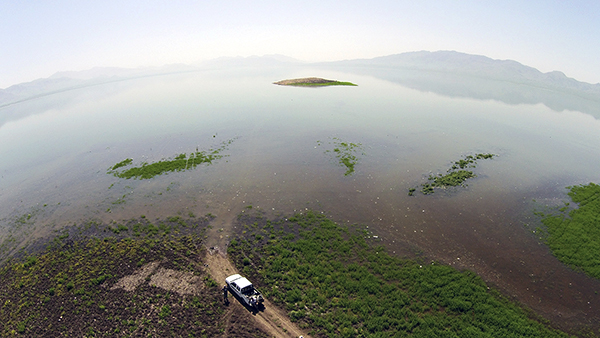
The site of Bab-w-Kur in Lake Dokan (Photo: Henrik Brahe, spring 2015)
Aims of investigations
A short survey season by the University of Copenhagen Archaeological Project (UCAP) on the Rania Plain – renamed the Danish Archaeological Expedition to Iraq (DAEI) in the autumn of 2015 – took place between 8th and 23rd April 2015. The aim was to continue the survey project on the Rania Plain – a project that was initiated in the autumn of 2013 and conducted in collaboration with the Netherlands Institute for the Near East (NINO).
One of the aims was also to test and validate some of the theories and insights concerning the development and nature of early urbanism in the Zagros mountains of northern Iraq that the University of Copenhagen team have been developing since 2013. These ideas and theories have been presented by the project at various international archaeological conferences and discussed in a number of published and forthcoming international publications.
In the spring of 2015, the University of Copenhagen’s archaeological team was small and consisted of Tim Skuldbøl (Director), Carlo Colantoni (Survey leader), Henrik Brahe (Photographer, artist and UAV/drone specialist) and was joined by Barzan Baiz (the Sulaimaniyah Directorate of Antiquities and Heritage Representative) (Figure 1).
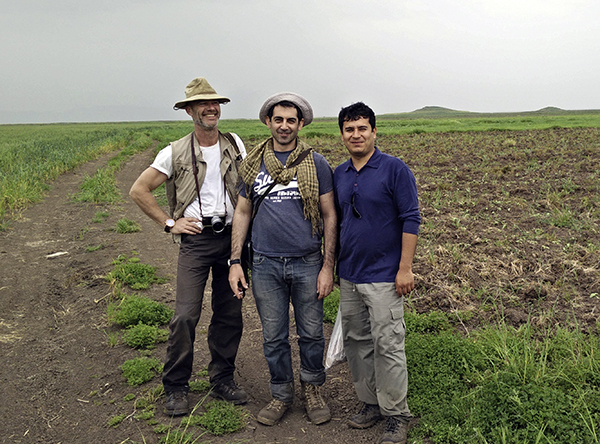
Figure 1. Henrik Brahe (left), Carlo Colantoni (middle) and Barzan Baiz (right) (Photo: Tim Skuldbøl, spring 2015)
Background - The Rania Plain Survey Project
The Rania Plain Survey Project was initiated in the autumn of 2013 to complement recent salvage excavations conducted on the Rania Plain. The background and research aims for the project are discussed in detail in the 2013 report. The primary goals of the survey project are to record archaeological sites in danger of destruction and to place settlements on the plain in a wider analysis of settlement development in the Zagros foothills. The project takes place within a 15 km radius zone around the site of Shemshara (Figure 2).
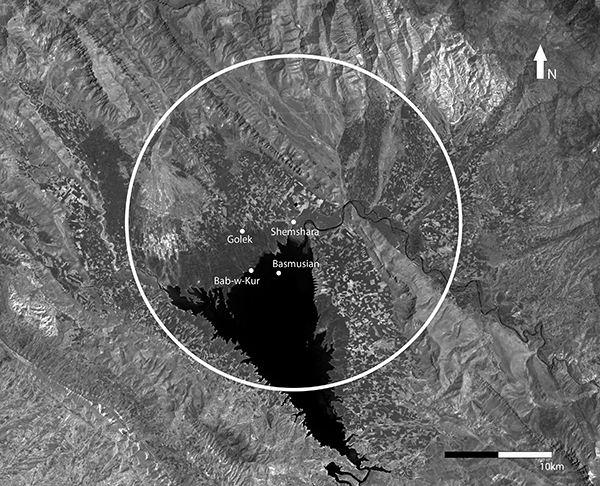
Figure 2: Landsat satellite image from 1999 showing the 15 km radius survey area around the site of Shemshara (Illustration: Tim Skuldbøl).
The Rania Plain is an endangered archaeological landscape. Many archaeological sites are heavily affected by expanding towns and villages, infrastructure development, intensification of farming activities and by the waters of the Dokan Lake (see Skuldbøl and Colantoni 2014 and 2016, also see the 2013 report).
Preliminary results of the spring 2015 investigations
In the spring of 2015 investigations comprised:
- Identification of additional archaeological sites on the Rania Plain.
- Photographic recording – both on the ground and aerial UAV/drone photography – of the surface remains at Bab‐w‐Kur and selected sites along the inundation zone of Lake Dokan.
- Analysis of ceramic data collected from the 2013 and 2015 survey seasons.
In the spring of 2015 survey work moved beyond the initial 2 x 2km ‘test area’ established in 2013 and was conducted in the western and central parts of the survey area. The survey work consisted of a combination of targeted visits to specific points of interest: potential sites identified by the use of remote sensing. Supplementing this approach was a high-intensity field walking across segments of the plain to investigate and identify archaeological sites that were difficult or too ephemeral to identify solely through the use of remote sensing. This technique proved fruitful with the identification of several small sites.
In addition to the strategies mentioned above, we also investigated known larger sites for signs of settlement sprawl or satellite sites. Once again, this approach proved satisfyingly successful with the identification of settlement sprawl around the sites of Golek and Dugurdkhan/Dukirdkan.
During the survey in the spring of 2015, the project identified an additional 22 archaeological sites of which 19 sites were collected or sampled (Figure 3). The newly identified sites are primarily located around Golek (see below) and in the western part of the survey area. The more visible sites – for instance, Blair, Boskin, and Dugurdkhan/Dukirdkan – were already known from a survey by Iraqi archaeologists in the late 1950s before the flooding of the plain (see Al-Soof 1970).
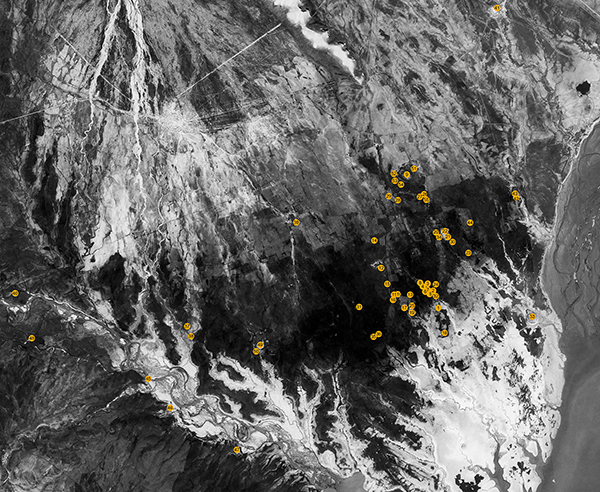
Figure 3: CORONA satellite image showing the distribution of sites identified by the University of Copenhagen during the autumn 2013 and spring 2015 seasons (Illustration: Tim Skuldbøl).
It is worth noting that a number of sites surveyed by the University of Copenhagen had also been visited by the NINO team during the autumn of 2014. Finally, a small number of sites identified by us in 2013 were revisited and sampled in 2015.
This revisiting of sites has allowed the project to:
- Map and record the sites in detail (with topographic plans, photographs of archaeological features and aerial drone imagery of sites and their immediate surrounding).
- Undertake heritage preservation work identifying and recording damage to the sites.
- Confirm, fine-tune and amend the dating of these sites with a new collection of ceramics.
Evidence for potential settlement sprawl and deeper complexity of early settlement patterns on the Rania Plain were investigated and ideas tested. Sites under threat of damage by Lake Dokan were revisited and recorded with drawings, photographs and drone aerial imagery. Other sites under possible threat of damage by modern farming or industrial activities were assessed by the University of Copenhagen team and the results were shared with the Sulaimaniyah Directorate of Antiquities and Heritage. Finally, research work was undertaken on the ceramics collected from survey work undertaken in 2013.
The Project’s use of aerial drone photography (a technique first used by the project in 2013) has allowed us to continue to monitor potential damage to the archaeological landscape with up-to-date photographic records and also as a means of identifying architecture and archaeological features visible on the surfaces of the mounds that have been exposed by the action of the lake’s waters.
In the spring of 2015, we made preliminary investigations of the site of Golek/Gulak, despite the fact that crops covered much of the site (Figure 4), where we located several new small sites or satellite sites in the vicinity of Golek. Samples of pottery collected from these sites seem to date to the Late Chalcolithic and later periods. The close proximity of the sites around Golek suggests that these sites might have formed a ‘site cluster’ in the Late Chalcolithic period. We have identified comparable site clusters from the Late Chalcolithic period around Bab-w-Kur, Warankah and Dugurdkhan.
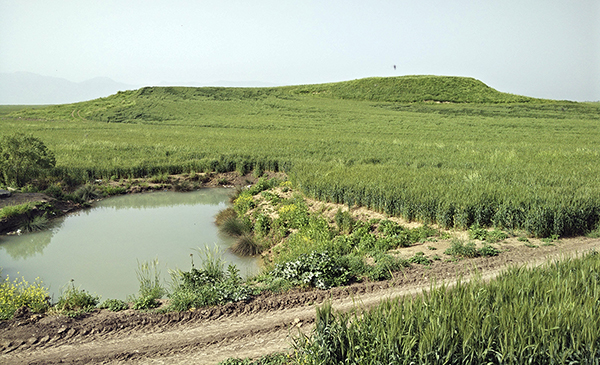
Figure 4: Golek/Kullak (Photo: Henrik Brahe, spring 2015).
Basmusian
Basmusian, possibly the largest site on the Rania Plain, is a good example of a site being destroyed by the waters of Lake Dokan. The site is located on the eastern side of the plain (today permanently underwater) and was surveyed and briefly excavated in the 1950s by Iraqi archaeologists prior to the flooding of the plain (see Al-Soof 1970).
The University of Copenhagen inspected the site of Basmusian in the autumn of 2013 and in the spring of 2015 (Figure 5-6). A sample of pottery was collected. Over the course of these two visits, we monitored and recorded – with plans, numerous photographs and UAV images – the destruction of the mound and its citadel by the lake’s waters.
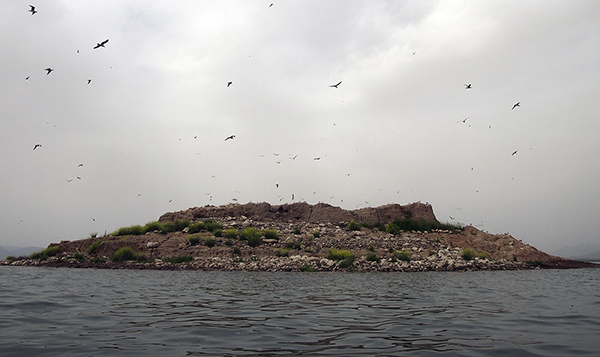
Figure 5: The citadel of Basmusian (Photo: Henrik Brahe, spring 2015).
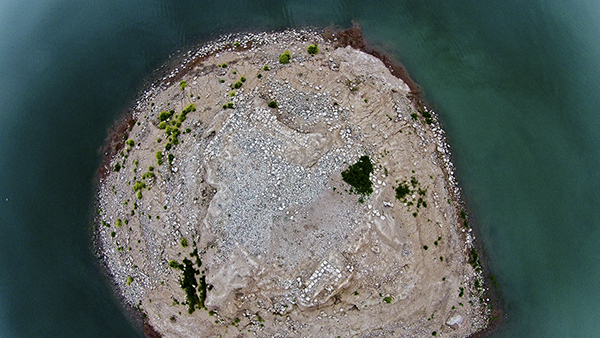
Figure 6: UAV/drone image of Basmusian. (Photo: Henrik Brahe, spring 2015).
Mud brick, baked brick and stone structures across the entire mound are being heavily damaged: rapidly eroded away by the rising and falling of the lake’s waters (Figure 7-8). There is a clear destruction on the citadel and we noted many areas of badly damaged baked brick architecture and large deposits of out-of-situ pottery along the edges of the citadel.
Our preliminary inspection of the collected pottery samples from the surface of the citadel and the area of the lower mound not submerged suggests a long occupational sequence starting in the prehistoric period and ending in the Islamic period. Many sherds dating to the Late Chalcolithic were identified along the base of the citadel. In the autumn of 2015, we plan to conduct a systematic collection of the mound and continue recording and monitoring damage to the site.
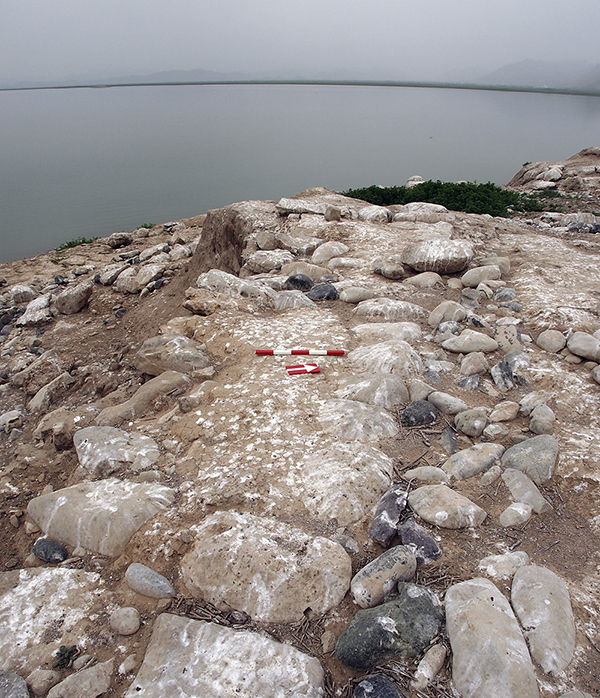
Figure 7: Basmusian. Exposed and damaged stone structures (Photo: Henrik Brahe, spring 2015).
A preliminary examination of the material has expanded our understanding of settlement patterns on the plain across all periods. One of the foci of the project is on the Late Chalcolithic period. Sites such as Blair, Boskin, Dugurdkhan/Dukirdkan and Golek/Kullak have all furnished ceramic evidence of late Chalcolithic occupation.
Taken in conjunction with data collected by the Rania Plain Survey in 2013 and data published by al Soof in 1970, we are starting to reconstruct a picture of dense and abundant settlement occupation in both the early Late Chalcolithic and later Late Chalcolithic period, when we see strong Southern Mesopotamian (southern Uruk) material cultural influences on the Rania Plain, especially in forms of pottery with the kind of distinctive cultural artefact types such as the bevelled rim bowl.
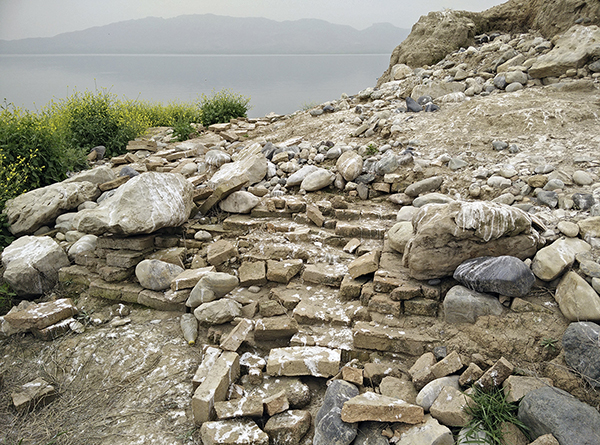
Figure 8: Basmusian. Exposed baked brick structures (Photo: Henrik Brahe, spring 2015).
Insights and future work on the Rania Plain
The 2015 survey is beginning to validate the insights into the distribution of settlement across the plain recognised in 2013: (a) that the sites are distributed along perennial water sources; (b) that many of the sites are relatively small at 0.5-2 hectares; (c) that the plain has dense settlement patterns peaking in the Late Chalcolithic and the Hellenistic through Islamic periods, and (d) that a number of larger sites on the plain display evidence of wider settlement complexes with sprawl or satellites surrounding them, with these components, often dating the Late Chalcolithic period.
The University of Copenhagen Archaeological Project on the Rania Plain plans to continue the survey of the newly expanded zone around Bab-w-Kur in the autumns of 2015 and 2016, identifying additional sites and completing the high-definition survey of the plain’s complex settlement patterns. This will provide a more comprehensive understanding of not just the settlement patterns on the plain, but of the character and relationship between settlements of various periods: data necessary to understand the development of early urbanism in this region during the Late Chalcolithic period.
